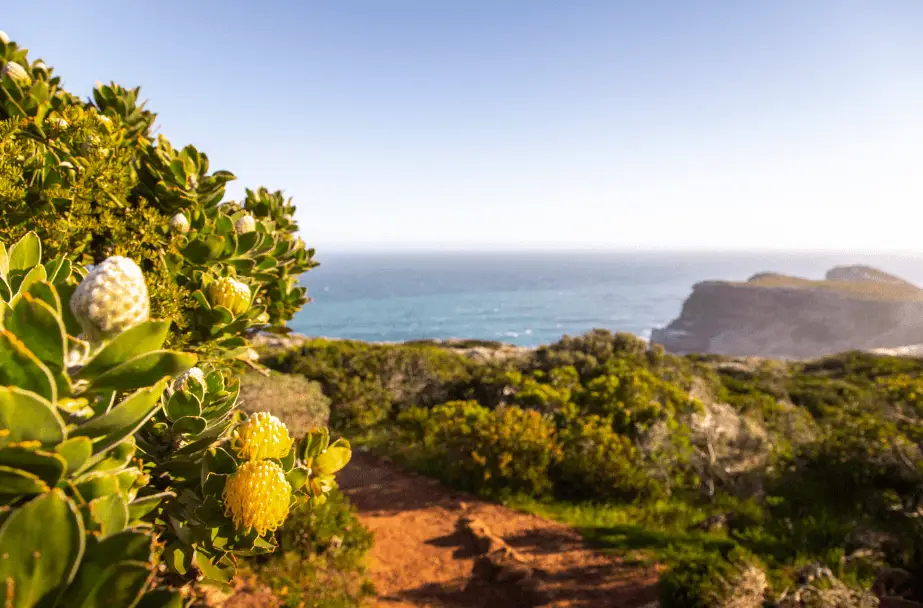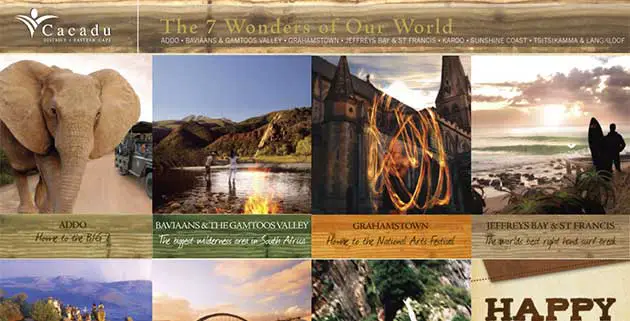South Africa – A bucket list destination for plant lovers
Cape Town was recently named the world’s 5th most instagrammable destination in the world by international travel media group Big 7 and has for the last four years been named as one of the most beautiful cities on the globe.
Notwithstanding Cape Town’s gorgeous landscape South Africa as a whole is not to be overlooked for the natural splendour each of the unique nine provinces in the country has to showcase.
From the ancient forests of Hogsback, which inspired JRR Tolkien’s ‘The Hobbit’, to the giant cycads found in Limpopo’s Modjadji forest, the Spring flowers which decorate the Namaqualand valleys and the vast acres of vineyard making up the Western Cape’s wine region – Avukile Mabombo, Group Marketing Manager at Marriott International, Cape Town, shares his essential guide to the seasonal highlights of the 3rd most biodiverse country in the world – according to the South African National Biodiversity Institute (SANBI).
Mabombo, who hails from the Eastern Cape, enthuses about the pleasure in the Winter months of June to early November of driving up a winding, rocky mountain pass, watching the landscape change with clouds starting to envelop the roadside cliff. Visitors can best experience the awe found in the mystical Amatole Forests of the Eastern Cape’s Hogsback village, named by many as Tolkien’s Middle Earth, populated with beautiful waterfalls, the rare Cape Parrot, the Amatole Toad and the old world Samango monkey species which are often seen swinging in the trees surrounding the accommodation.
Hogsback is also home to around 1215 plant species, many of which are endemic to the area and can be seen on guided tours during the Hogsback Festival of Trees.
The annual Hogsback Spring Garden Festival is held every October around the same time as the Bedford Gardens Open Gardens festival.
Namakwaland, Springbok, Okiep, Nababeep, Concordia and Kamieskroon are all top destinations to include during a Spring Flower tour from July to September when the naturally occuring wild flowers emerge from the dusty earth .Travellers staying over in some of the quaint towns along the flower route should pack warm clothes as the evening temperatures can drop to near-freezing.
Cape Peninsula, home to Cape Town and the Southernmost tip of the African continent, showcases more plant species in its 22 000 hectares than the whole of the British Isles and New Zealand.
Cape Point nature reserve is the main attraction along this Atlantic ocean coastline offering guests 7 750 hectares of Cape fynbos growing in its natural habitat, the sandy beach soil which has blown off the Atlantic Ocean coastline. Some species of fynbos typical to the reserve are the
The National Park is open throughout the year with the best time to visit being between the months of May and October when the Southern Right Whales spend the winter feeding on plankton just off the coast, nursing newly born calves.
The Western Cape is renowned for its various botanical gardens such as Kirstenbosch Gardens and the Vergelegen Estate Heritage gardens which remain beautiful throughout the year showing off camellia, agapanthus, white mulberry, camphor, maple and yellowwood trees, rose and hydrangea. Vergelegen gardens also boasts being home to the oldest oak tree in the Southern Hemisphere, estimated to be around 300 years old.
Along the Cape Wine route lies the Rustenburg Manor house which holds a magnificent garden show during the month of October taking place around the same time as the annual Franschhoek Open Gardens show which will be held this year from Friday 25 October to Sunday afternoon 27 October 2019.
Tours to these sights with or without a trained guide can be organised in advance with the hotel concierge.
Just a short drive out of Cape Town from July through to September local and international tourists flock to the West Coast areas of Langebaan, Darling and Saldanha to view colourful expansive fields of yellow Goudsbloem, purple Elandsvy, lilac Bokbaai vygie, White Rain daisy, blue Sporrie and the Iris-like Soetuintjie flowers.
Due to the popularity of this wonderful spectacle, accommodation should be booked well in advance. Various international loyalty programmes like the newly launched Marriott Bonvoy offer
The entire province of KwaZulu-Natal is recommended for tourists due to the humid, tropical climate creating rich biodiversity and perfect conditions for the sugar cane, maize and pineapple crops to grow.
Key sites to visit include the KZN inland branch of the Botanical Society’s annual Open Wildlife Gardens in March 2019, the Indigenous Open Gardens in Kloof, KZN held in June, and the Open Midlands Gardens, KZN held from September to November each year.
The Limpopo province is known as the ‘Food Basket’ of South Africa as it produces about 60% of South Africa’s agricultural production which consists mainly of various fruits and vegetables, maize meal, wheat and cotton and tea.
This province is also the most largely populated area of the famous Marula tree indigenous to Southern Africa and serves as gateway into South Africa for bordering countries such as Zimbabwe, Botswana and Zambia.
In September when the Spring Flowers come alive, the Annual Orchid Festival is held in Magoebaskloof during their Spring Festival where one can also visit the picturesque Azalea Farm, the Cheerio Gardens and the Sequoia Garden Retreat.
All in all, South Africa is a






